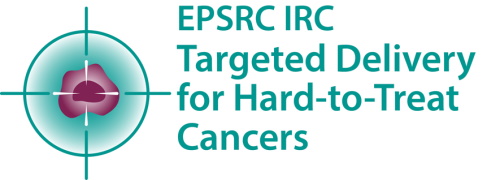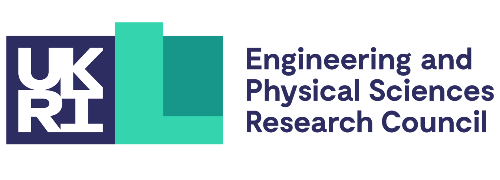
Submitted by L. Millard on Sun, 12/09/2021 - 15:48
Dr Christopher Chapman of Imperial College, London, who is in his third year as a post-doctoral biomedical engineering research associate as part of the IRC team, has been awarded a Rosetrees Enterprise Fellowship.
The Rosetrees Enterprise Fellowship is awarded annually and aimed specifically at recently qualified postdoctoral researchers primarily in the fields of engineering, computer science, maths and physics who wish to develop a long-term programme of biomedical research. The £180,000 awarded to Dr Chapman for his research proposal titled, ‘Precision cancer treatment through solid-state intratumoural chemotherapeutic delivery via implanted electroactive polymer electrodes,’ will fund three years of development of an implantable device to deliver precision chemotherapeutic release as part of the IRC programme.
I am very excited for the opportunity to focus on the translation of this technology towards a clinically relevant device. Addressing key questions on the use of electrophoretic devices in cancer treatment will aid this technology, and others developed within the IRC, in their translation towards clinical use. I believe that further development of these devices will demonstrate significant promise in improving the prognosis of patients with inoperable brain tumours and other hard-to-treat cancers. Dr Christopher Chapman, Research Associate, IRC
Dr Chapman said: “I am very excited for the opportunity to focus on the translation of this technology towards a clinically relevant device. Addressing key questions on the use of electrophoretic devices in cancer treatment will aid this technology, and others developed within the IRC, in their translation towards clinical use. I believe that further development of these devices will demonstrate significant promise in improving the prognosis of patients with inoperable brain tumours and other hard-to-treat cancers.”
The primary engineering challenge associated with developing new therapies for hard-to-treat cancers is to increase the concentration of chemotherapeutic drugs without causing significant toxicity elsewhere. Although current targeted treatments significantly reduce off-target toxicity due to systemic administration of chemotherapeutics, they have potentially severe effects because they fail to address key challenges associated with the areas in which they are used.
Dr Chapman said: “One significant cause of unwanted side effects is the need for high systemic doses to achieve a therapeutic benefit. While system-wide delivery of a therapeutic is necessary for some conditions, such as sepsis, in many conditions, such as a localised tumour, the drug travels throughout the whole circulatory system in order to reach one target area. Since this target tissue must receive therapeutic levels of the drug for it to be effective, substantial amounts of healthy tissue are also exposed to the same levels of the drug.”
Ideally, high concentrations of cancer-specific chemotherapeutics could be released directly in the tumour microenvironment without the need for a large pressure differential. Current methods being trialled for local delivery to tumours have used implanted cannulas to deliver liquid chemotherapeutics directly to the tumour. However, carrying the drug molecules in a liquid takes up a lot of volume and therefore requires high pressure to drive in sufficient liquid chemotherapeutics to have an effect. The large pressure differential needed for this method of drug delivery can potentially lead to more unwanted side effects.
One technology that shows potential for this type of delivery is ionic drug delivery. This mode of delivery, which uses drug-eluting electrodes or electronic ion pumps as delivery vehicles to transfer drug molecules directly to the surrounding tissue without a liquid carrier – a process termed ‘dry delivery’ – causes no increase in the volume to the surrounding tissue delivering the drug molecule itself directly to the tumour. This makes electronic ion pumps a strong candidate for the targeted delivery of high concentrations of chemotherapeutic agents deep into the highly pressurised tumour microenvironment in the hard-to-treat cancers, glioblastoma multiforme (GBM) and pancreatic ductal adenocarcinoma (PDAC).
Challenges associated with the current dry releasing technologies remain. These include the low drug-loading capacity of drug-eluting electrodes due to limitations emerging from surface area and the need for microfluidic reservoir conditions for electronic ion pumps to constantly deliver drugs. Ideally, these dry delivery devices would be able to carry a large payload of drugs while not requiring an external reservoir to deliver the therapeutic dose. One method to accomplish this involves immobilising drugs in a polymeric matrix and utilising the drug-loaded matrix as a functional reservoir that is part of the device itself. To successfully couple the drug-loaded matrix into a device capable of dry release, conducting polymers (CPs) can be added to the matrix to form a two-part polymer network of drug-loaded matrix and electroactive CPs.
Dr Chapman’s research proposal, which was awarded the Rosetrees Enterprise Fellowship, aims to address these challenges by producing an innovative combination of polymers that enable both high drug-loading capacity and on-demand voltage-controlled release in a form-factor that can be implanted inside the tumour microenvironment for precision delivery of chemotherapy. By targeting treatment into tumours via implanted electrodes, side effects may be reduced compared to conventional treatments to offer patients a better quality of life.
Dr Chapman said: “A unique research team, consisting of clinicians with significant experience in treatment of these hard-to-treat cancers, and researchers with experience in drug development, has been assembled for this fellowship. I am very hopeful that this research team will enable highly translational outcomes that will lead to paradigm shifting technologies for the treatment of GBM and PDAC.”


